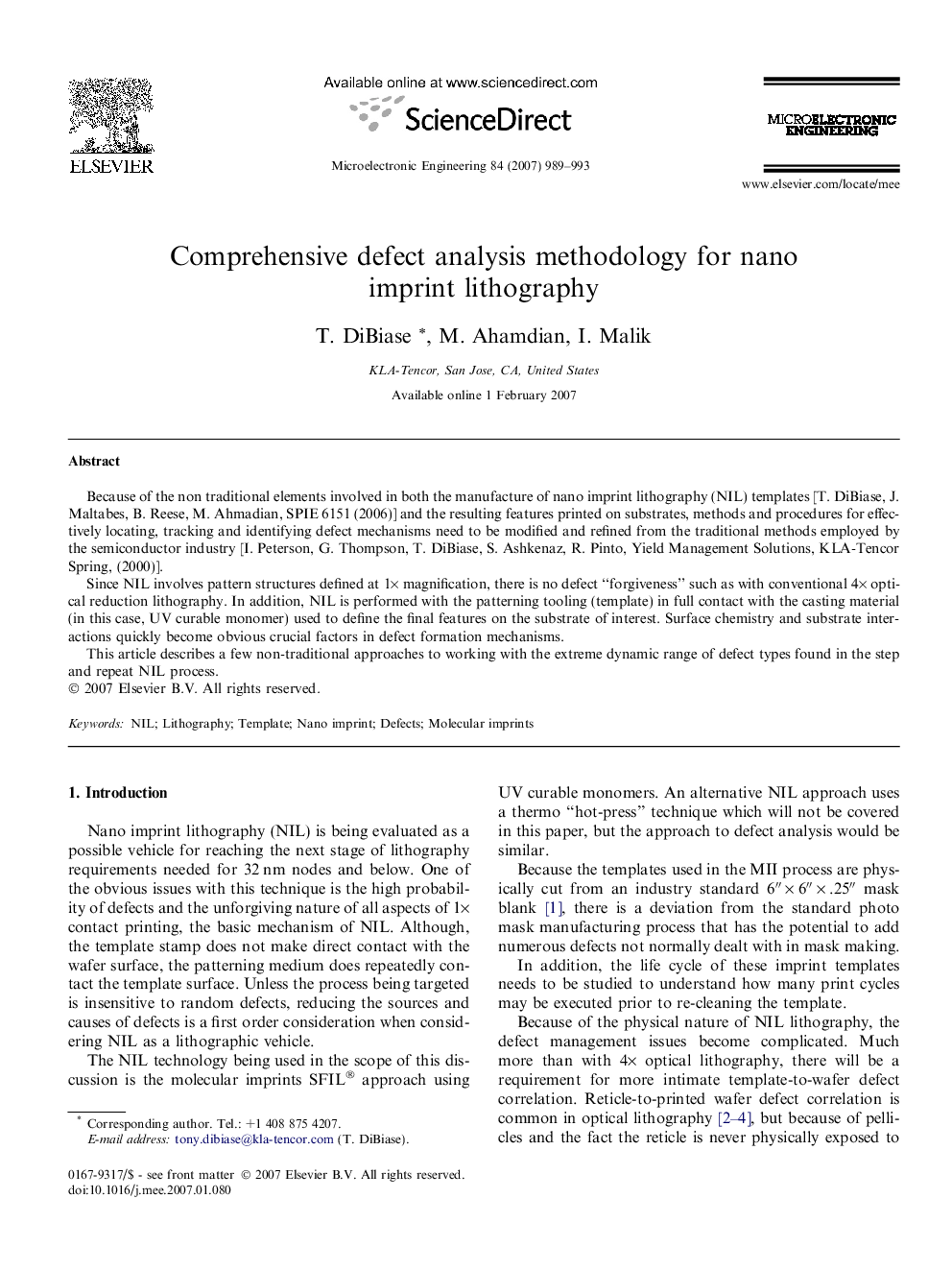| Article ID | Journal | Published Year | Pages | File Type |
|---|---|---|---|---|
| 540103 | Microelectronic Engineering | 2007 | 5 Pages |
Because of the non traditional elements involved in both the manufacture of nano imprint lithography (NIL) templates [T. DiBiase, J. Maltabes, B. Reese, M. Ahmadian, SPIE 6151 (2006)] and the resulting features printed on substrates, methods and procedures for effectively locating, tracking and identifying defect mechanisms need to be modified and refined from the traditional methods employed by the semiconductor industry [I. Peterson, G. Thompson, T. DiBiase, S. Ashkenaz, R. Pinto, Yield Management Solutions, KLA-Tencor Spring, (2000)].Since NIL involves pattern structures defined at 1× magnification, there is no defect “forgiveness” such as with conventional 4× optical reduction lithography. In addition, NIL is performed with the patterning tooling (template) in full contact with the casting material (in this case, UV curable monomer) used to define the final features on the substrate of interest. Surface chemistry and substrate interactions quickly become obvious crucial factors in defect formation mechanisms.This article describes a few non-traditional approaches to working with the extreme dynamic range of defect types found in the step and repeat NIL process.
